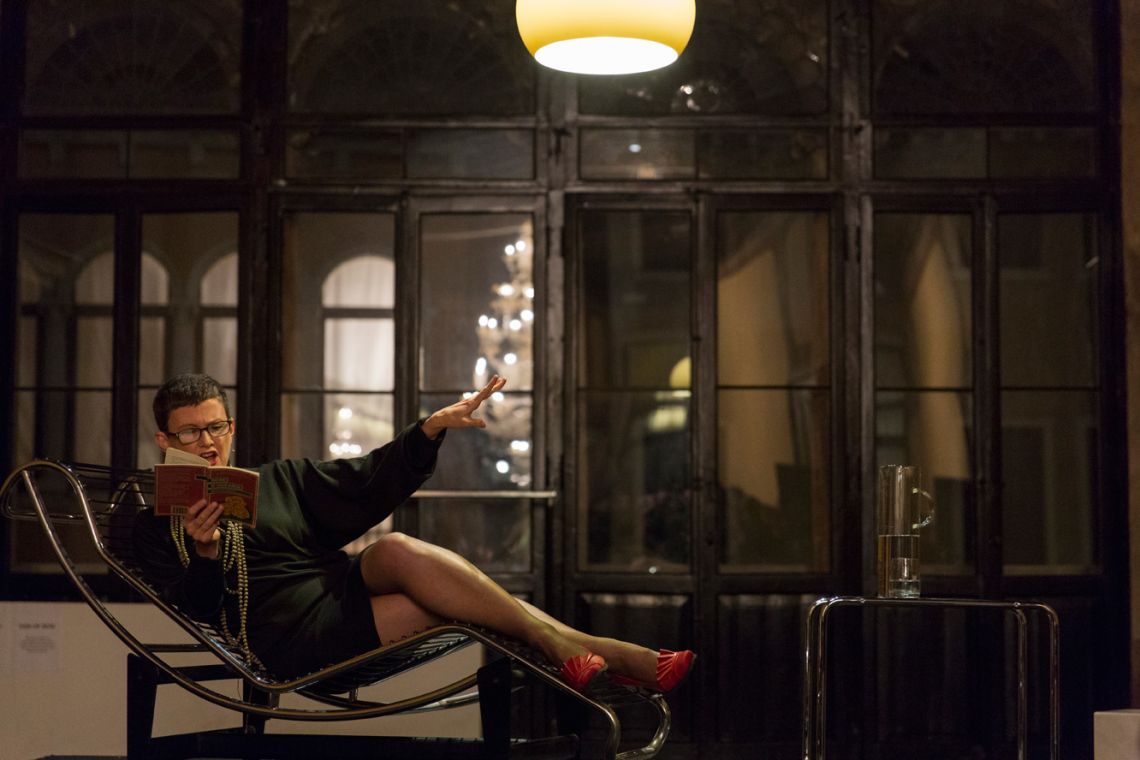• TRILOGY OF THE BODY II: Ritual Body – Political Body (2014)
Full documentary of the II VENICE INTERNATIONAL PERFORMANCE ART WEEK "Ritual Body – Political Body" 2014. Produced by Nomad-VestAndPage-Alumnos47 / Filmed and edited by Sebastian Mantelli / Interviews and direct sound by Adriana Maurer.
Following the first edition Hybrid Body – Poetic Body that took place in December 2012 at Palazzo Bembo, the second part of the Trilogy of the Body project: II VENICE INTERNATIONAL PERFORMANCE ART WEEK took place at Palazzo Mora in Venice, December 2014 under the focus Ritual Body - Political Body. The live art exhibition project dedicated to contemporary performance art showcased in its second edition works of over 50 international performance artists from around the globe, some of which are presented in cooperation with cultural institutions and foundations. Pioneers of this art discipline exhibit alongside established and emerging artists, reflecting influences and current tendencies in the field. The project consists of a vibrant program of live performances, installations, photographic and video documentation, conferences, daily round tables talks, a Study Room, a Movie Room and meetings with the participating artists, researchers and curators.
For the second edition with the focus Ritual Body - Political Body the VENICE INTERNATIONAL PERFORMANCE ART WEEK 2014 aims to investigate a wide range of concepts such as: art as a space for civil negotiation where human ethical values are the core; interconnectivity; political confrontation; utopia; ecological issues; social and individual conflicts and responsibilities, and how the self relates to them, at the same time concentrating on the fact that the presence of the human beings in this world is always more than a temporary condition. The communication that can be triggered between artists and the audience is an essential element. The topics addressed during the week will relate to the need to look at social relations and the lives of individuals with greater care. Due to the specificity of the theme of this second edition Ritual Body - Political Body, the live performances and works on display will also seek to provide reflection and further considerations on how to find meaningful mechanisms to foster positive change through contemporary art and culture in a clearly vital way. The VENICE INTERNATIONAL PERFORMANCE ART WEEK wishes to enrich the highly renowned art scene in Venice with the audacious art form of performance art. Initiated and curated by VestAndPage and organized in collaboration with Studio Contemporaneo, Venice Open Gates, We Exhibit, Live Arts Cultures and the European Cultural Centre | GAA Foundation, which hosts the project in its prestigious premises at Palazzo Mora on Strada Nova.
ART WEEK BLOG updated daily during the week with features, interviews and reviews on veniceperformanceart.tumblr.com.
ARTISTS 2014
TO MARK A DIFFERENCE – FOR THE RIGHT TO THINK FOR DIFFERENCES
Rituals and politics have both been intrinsically linked to the history of mankind and the relation that the human being has with his/her body. They also both relate to states of continuous change and transformation, and underlie methods of communication. The first performances were people sitting around a fireplace, telling stories and carrying out actions they considered powerful enough to awaken external, social or personal forces that could have positive influence on current states. Giving space to practices that explore these states, the second edition of the VENICE INTERNATIONAL PERFORMANCE ART WEEK addresses and inquires into where individual, social and political spheres are linked and influenced by spiritual and rational directions that mankind takes, as decisions continue to be made on the basis of temporary or persistent convictions. With its undoubted human quality, performance art questions directly, viscerally and originally the roots of its praxis, which are to be found in primordial and native rituals, as well as in collective social notions of taking act and standing up in front of injustice and disregard: for it, in our modern times performance art has become a controversial practice, and though ephemeral, a point break against obsolete social habits and conditioning. Hence, it can be intended as a poetic breach, vital in essence, onto the walls of indifference.
The VENICE INTERNATIONAL PERFORMANCE ART WEEK wishes to provide a week-long ground for immediate and personal encounters, as well as permissive and free exchange between international art professionals and the audience in Venice, reflecting on formalism, habits, power, symbols, structures, believes, ideals, as well as socio-political facts, visions and utopias from an international artistic perspective. Once again in the second edition of the VENICE INTERNATIONAL PERFORMANCE ART WEEK, human beings will be at the core of the arts, this time observed with a critical, but concentrated eye on a variety of attitudes and modes, likewise reflected in a mirror, or more attentively through a magnifying glass.
Performance is, for me, an attempt to discover a language or method of communication, which bypasses social and individual barriers as sound does. The most important aspect of performance is the elimination of media or mediating or condition. The action is performed live and in front of its receiver. It exists only on these terms and in this context and no other: like eating. ~ Terry Fox
TO GATHER AND MEET
The sentence by Daniel Goleman: Calling a meeting is a political act in itself, which has already been entered in several dictionaries under the voice "political", well represents the spirit that also animates the second edition of the II VENICE INTERNATIONAL PERFORMANCE ART WEEK Ritual Body-Political Body. The aim is to offer to the city of Venice an alternative art project model. The first edition, as described by participating artist Lee Wen: This is not a circus, this not a show, this not a biennale, this is a meeting of artists and people who looked for the pearls in the rivers of human civilizations and came to share what they found.1 The VENICE INTERNATIONAL PERFORMANCE ART WEEK is intended to be primarily a gathering reunion among artists and the audience. To experience live art in a context of dynamic, reciprocal exchange is in fact a ritual and a political act in itself. Here art becomes a space of civil negotiation between people, where ideas are shared to generate further thoughts in real time, which is a fundamental prerogative of performance art. Inspired by the concepts of the Gesamtkunstwerk and that life is art and vice versa, this year the live art exhibition project has evolved in its preparation and presentation as an openly accessible people-project, made possible thanks to the commitment of many who believe in this format that wish to re-awaken and re-evaluate the possibilities and ways that pioneer artists already proposed and indicated through their committed and dedicated work.
With our concern being firstly human, social and ecologic, likewise for example in the spirit of Joseph Beuys, Tehching Hsieh and Allen Ginsberg, the VENICE INTERNATIONAL PERFORMANCE ART WEEK continues to function outside of commercial and economic schemes and concerns, and concentrates on providing a common ground for encounter, inspiration and creativity. It firmly ponders on the idea that those who work in the arts should dissent to remain unavailable to compromise, intractable to the impositions of the market, free interpreter of his/her own social responsibility. The participating artists in the second edition of the VENICE INTERNATIONAL PERFORMANCE ART WEEK Ritual Body – Political Body are among those who continue to oppose through their work the genocide of desires, dreams and utopias, which is one of the causes of the self-serving political sleaziness of today that inevitably carries, within a corruption of fundamental human values and principle, the loss of dignity of human beings and their cultures. Towards the viral superficiality and vanity of thought and behaviour professed by telecracy, the mass media and the hegemony of political parties, we believe that today artists have to respond assuming a sense of responsibility, transparency and a position towards history that speaks of a substantial necessity, a need, a profound urgency.
As Lucrezia De Domizio Durini states in her last book, the power of an artist is to express something that captures, retains and gives shape to humanity. This is the task of an artist, because art is mainly nourished by what society condemns, excludes and forgets.2 ... An artist at the service of society has a key role in social transformation, because she/he puts art to play a central role in our life, giving to it a function that changes the way we live, think, see. A dynamic change for a radical endless learning, which flows with the evolution of time. ... Art is a free alternative form of human existence, the place of the essential and the absolute tensions, where the artist does not reproduce the visible, but makes visible, through a variety of languages, his/her own very soul.3
Art is first and foremost a place where one cultivates the image of a world different from the one we know, and performance art is the practice to demonstrate it.
po·lit·i·cal
The term political (how and why we use it) derives from the ancient Greek πολιτική (politiké), composed by the word πόλις (polis) = city/citizenship/community of citizens, and τέχνη (téchne) = art, term which progressively implied the consequential understanding of how to operate to achieve one or more objectives. For the Ancient Greeks, the harmony existing between the polis and the individuals who composed it was assimilated to that existing in nature between the whole and its parts. By virtue of such a correspondence the Ancient Greeks felt organically integrated into their community, and each one found his/her realization in participation in community life and in the construction of the common good. For Aristotle, politics is the supreme aim of life ethics, as the social life is a natural need of men. In fact Aristotle defines man as a political animal in the sense of social being (politikòn zoon, from the Ancient Greek: πoλίτικoν: social, political, and ζooν: animal), unlike the beasts, or the gods who can live in isolation.4 The investigation of the Greek philosopher focuses on four key points, which underline the social importance of a beneficial communitarian life: man is a political animal, a social set up on a community and community-forming creatures; the polis is the perfect community; the polis is natural; the polis is inherently earlier than the house and the individuals.5 The model of harmony between individuals professed by the Ancient Greeks would then began to enter into crisis with the advent of sophistry, and this until our modern times, casting doubt on the existence of universal foundations inherent in the nature, on the basis of subjectivism and individualism more and more pronounced. However, the rise of subjectivism must also be seen as a positive conquest of human being since it offers the possibility of continuous and beneficial dialogue to intensify positive confrontation and communication among individuals. Notwithstanding, in our present days, those Aristotelian four key points may again deserve an attentive and profound reflection, considering the continuous dramatic evidences of bribery, which effect politics at any level, to favour personal convenience and exercise power that is detrimental to others. This inevitably contributed and still contributes to the disintegration of values and fundamental principles, which should underpin human life and society. At present, contemporary consumer globalized societies have deteriorated the sense of responsibility that each one of us ought to have, by taking the direction of authority, possession, self-affirmation and exploitation, which has supplanted the importance of mutual and reciprocal respect to understand the many cultural differences and human behavioural modes at many/every latitudes, while calculating narcissistic self-interest have harnessed the love and the ability to work together.
rit·u·al
The term "ritual" derives from the Latin word ritualis relating to (religious) rites. Nevertheless, the semantic value of the term implemented considerably over the centuries. Each of us makes daily rituals, sometimes without even realizing it. Rituals are a constitutional part of our "being in the world we live in". A ritual can be described as a sequence of activities and specific actions involving gestures, words, and objects, performed in a specific place, and performed according to set sequences. Rituals may also be "prescribed by the traditions of a community, and are characterized by formalism, traditionalism, invariance, rule-governance, sacral symbolism and performance."6 The Encyclopaedia Britannica explains ritual as "a specific, observable mode of behaviour exhibited by all known societies. It is thus possible to view ritual as a way of defining or describing humans. Human beings are sometimes described or defined as a basically rational, economic, political, or playing species. They may, however, also be viewed as ritual beings, who exhibit a striking parallel between their ritual and verbal behaviour. Just as language is a system of symbols that is based upon arbitrary rules, ritual may be viewed as a system of symbolic acts that is based upon arbitrary rules."7 Also the aim of functionalism is to explain ritual behaviour in terms of individual needs and social equilibrium. Ritual is thus viewed as an adaptive and adjustive response to the social and physical environment, to established or prescribed procedures.8 Rituals help us humans to bear a sort of "crisis of presence" that we feel by being in the world we live in, and by feeling threatened by and for our own life and freedom. At the same time the social component of the ritual allows strengthening internal bonds to the individual as well as to a community.
Psychoanalysis has also demonstrated the presence of a large variety of unconscious rituals of everyday human behaviour. In fact, in private life there are an infinite series of small rituals that if on one side can be considered small annoyances or even to limit the symptoms of a disease, on the other hand they can be considered absolutely normal and functional to the achievement of a high concentration. Ritual has always needed deep emotional involvement, without which it would cease to exist, whether it has a social purpose or that it is strictly personal. For this reason, ritual is required an aesthetic component, different in different cultures and at different times. The rite must evolve in order not to lose its meaning. Combing our hair, shaving in front of the mirror with the tools all well disposed close by the sink, preparing morning coffee for our partner, serving tea to our guests, briefing in the office with our colleagues, meeting our friends in a bar after a hard day of work, are all daily rituals in our lives. As rituals are the Eucharist, the daily Salah practice bowing and prostrating anywhere one is at the prescribed times by the rhythms of the sun, placing prayer notes in the crevices of the Wailing Wall, the Hindu ablutions, a demonstration on the streets.
In all this, the difference – may be said – is qualitative, not at all in dichotomous terms of "better and worse", but for the gestures, the kind of actions and modes, the tools and materials, and to what meanings and aims the actions that constitute such performances (either daily, sacred, political, civil) refer to. What they have in common is that all of them imply the need of individuals to express themselves humanly and continually certifying human presence and existence in the world, either privately and/or collectively.
VestAndPage (Verena Stenke & Andrea Pagnes)
NOTES
1- Wen, Lee. “There was no beginning… …Since there was no end”, In: Republic of Daydreams (The artist’s blog. December 23, 2012) Retrieved from http://republicofdaydreams.wordpress.com/2012/12/23/there-was-no-beginning-since-there-was-no-end/
2- De Domizio Durini, Lucrezia. Perché. Le sfide di una donna oltre l’arte. Milano: Mondadori, 2013. Source: Cerretelli, Maria Teresa. Intervista a Lucrezia De Domizio Durini. In: Wall Street International Arte (e-magazine, August 07, 2013).
3- Giacomelli, Marco Enrico. "Beuys e gli artisti del silenzio. Intervista con Lucrezia De Domizio Durini." In: Artribune (e-magazine. August 01, 2013).
4- Aristotle. Politika I, 2 and III, 6.
5- Ibidem.
6- Bell, Catherine. Ritual: Perspectives and Dimensions. New York: Oxford University Press, 1997. pp. 138–169.
7- http://www.britannica.com/EBchecked/topic/504688/ritual
8- Ibidem
![Enrique Ježik, Círculos Concéntricos [Concentric Circles]. Venice International Performance Art Week (2014). Photograph by Monika Sobczak.](/files/II%20-%20Ritual%20Body%20Political%20Body%202014/Enrique.Jezik_Venice.International.Performance.Art.Week.2014_photoMonikaSobczak.jpg)

Enrique Ježik, Círculos Concéntricos [Concentric Circles]. Venice International Performance Art Week (2014). Photograph by Monika Sobczak.
VENICE INTERNATIONAL PERFORMANCE ART WEEK is not an exhibition, it is an experience of presence, where you are performing what you would like to be, what you deeply felt and never expressed. ~ Letizia Liguori, Collaborator
.jpg)
Wen Yau, Wish You Were Here. Long durational performance installation, Venice International Performance Art Week (2014). Photograph by Monika Sobczak.
One of the largest and most comprehensive performance art events in the world. ~ Performance Is Alive
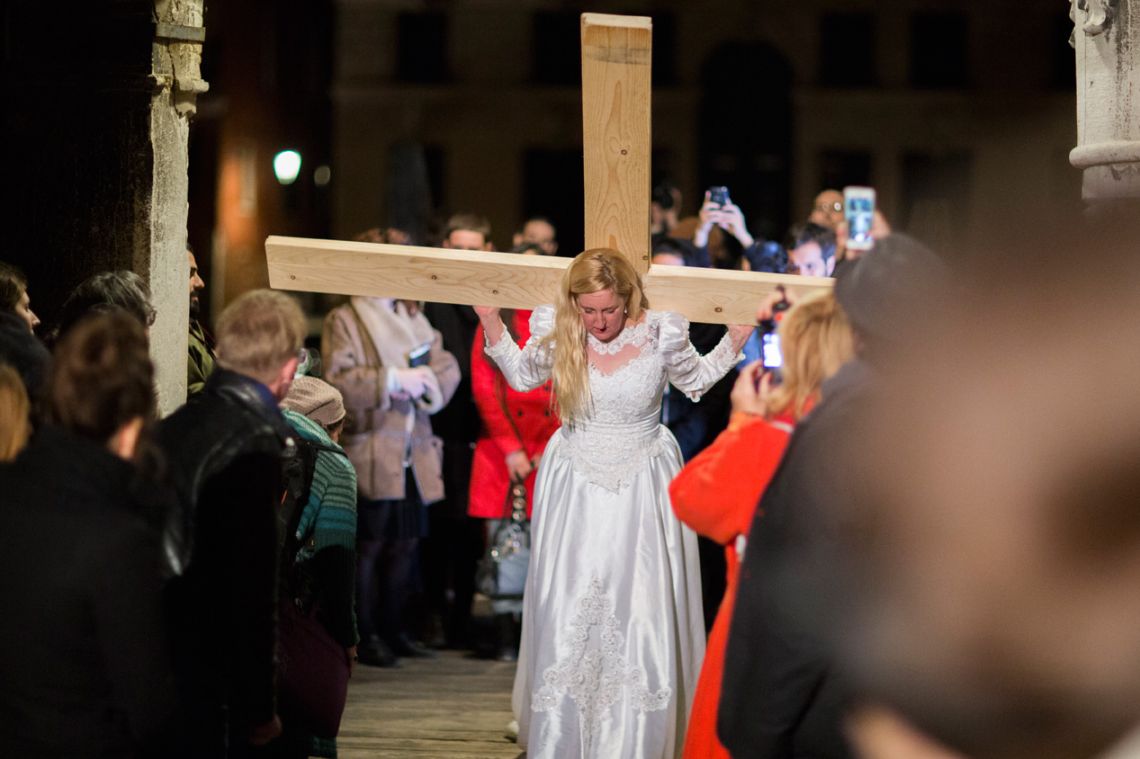
Jill McDermid, Woman on a Cross. Venice International Performance Art Week (2014). Photograph by Monika Sobczak.
Ogni giorno si assistono a performance diverse dove nessuno e' spettatore e dove tutto e' messo a nudo, cose e persone. Non c'e' ipocrisia, retorica, indifferenza sui problemi causati dall'uomo e subiti dall'umanita', la guerra, il lutto, la droga, la malattia. ~ La Nuova Venezia
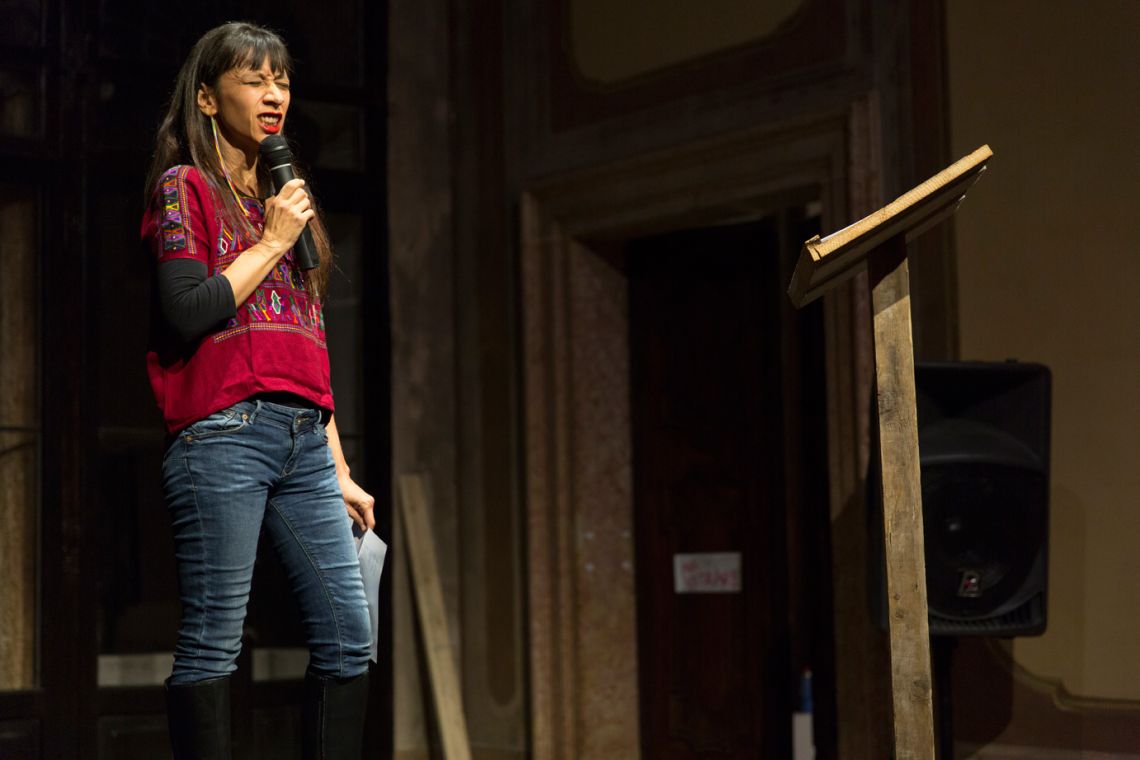
Regina José Galindo, Voz Humana. Poetry Reading. Venice International Performance Art Week (2014). Photograph by Monika Sobczak.
Così da renderlo utilizzabile, dal giardino d’ingresso fino alle ultime stanze sotto travi e capriate, per una manifestazione di grande qualità, curata nei dettagli dell’allestimento quanto nel denso programma di eventi e incontri. ~ Exibart

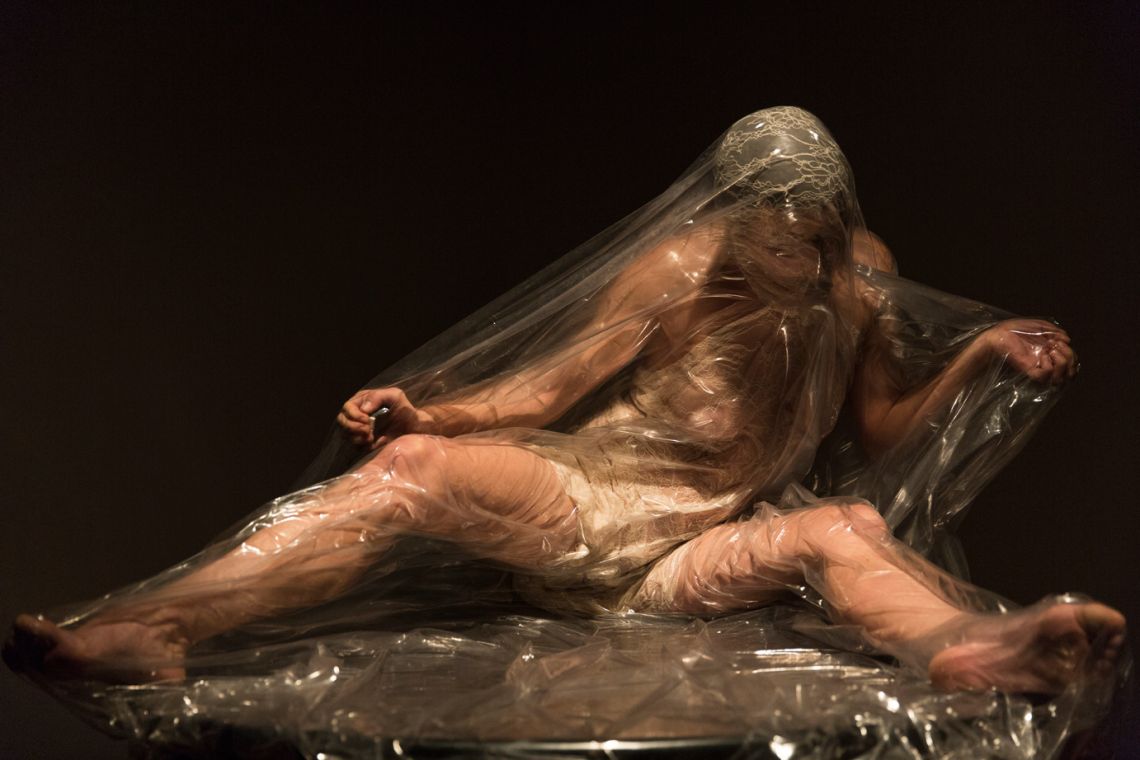
Andrigo & Aliprandi, vacuum. Venice International Performance Art Week (2014). Photograph by Monika Sobczak.
Un evento libero dalle logiche del mercato e dai meccanismi sovente inquinanti che spesso lambiscono la produzione artistica. ~ Chiara Casarin, Venezia News
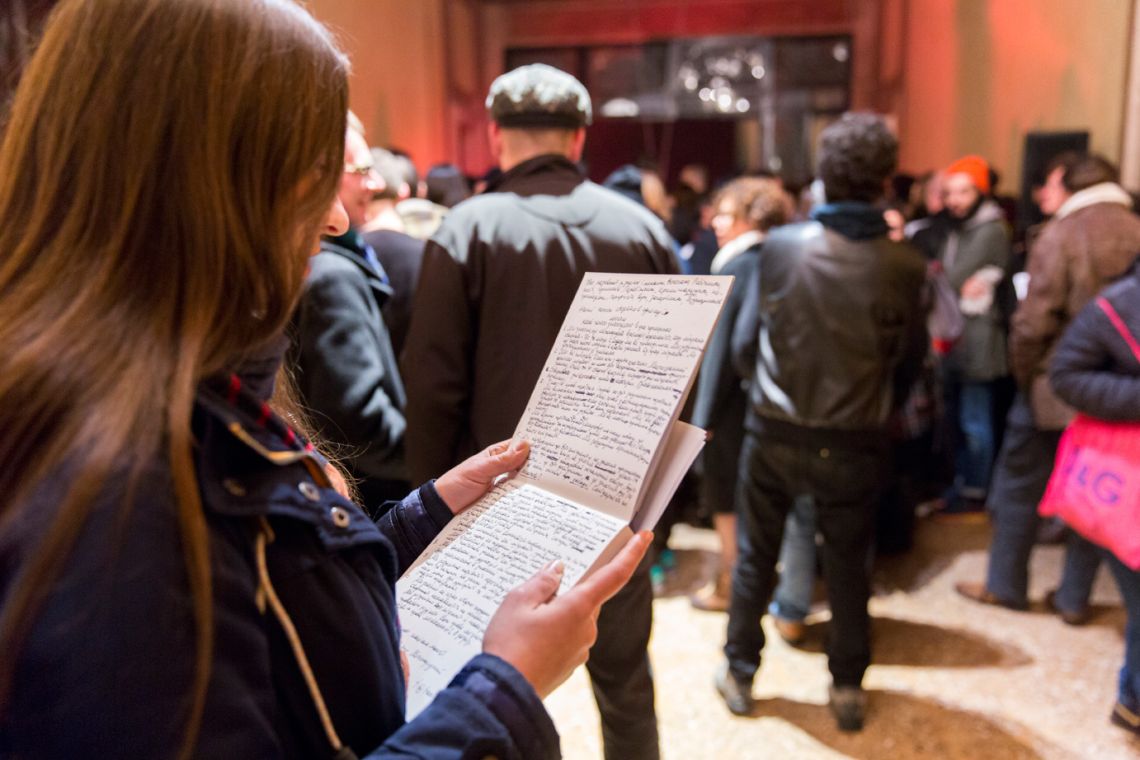
Tania Bruguera, Migrant Manifesto Reading (2014) Venice International Performance Art Week (2014). Photograph by Monika Sobczak
La VENICE INTERNATIONAL PERFORMANCE ART WEEK è molto più di happening di trasgressione e denuncia: è un incontro extrasensoriale, dove l’osservatore viene coinvolto in un dialogo 'silenzioso' con l’artista, diventando parte di performance, a primo acchito estranianti, ma che in realtà invitano a riflettere, abbattono l’atteggiamento d’indifferenza di chi guarda e trasmettono concetti sociali, politici e culturali forti più che mai nella società di oggi. ~ Eva Coletto, Artslife
.jpg)
Alice Vogler, Liability of Body, Language of Liability. Venice International Performance Art Week (2014). Photograph by Monika Sobczak.
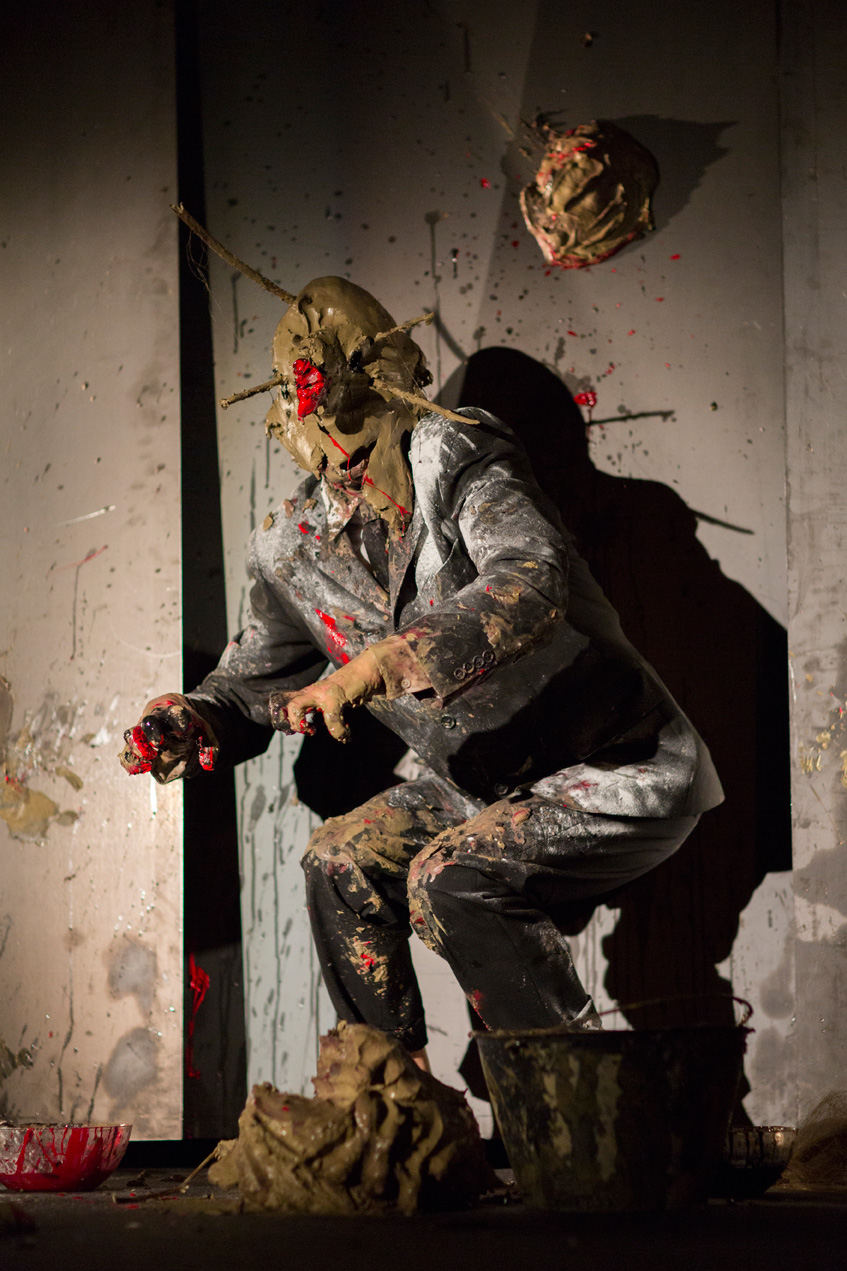
Olivier de Sagazan, Transfiguration. Venice International Performance Art Week (2014). Photograph by Monika Sobczak.
.jpg)
Sarah-Jane Norman, Bone Library. Venice International Performance Art Week (2014). Photograph by Monika Sobczak.

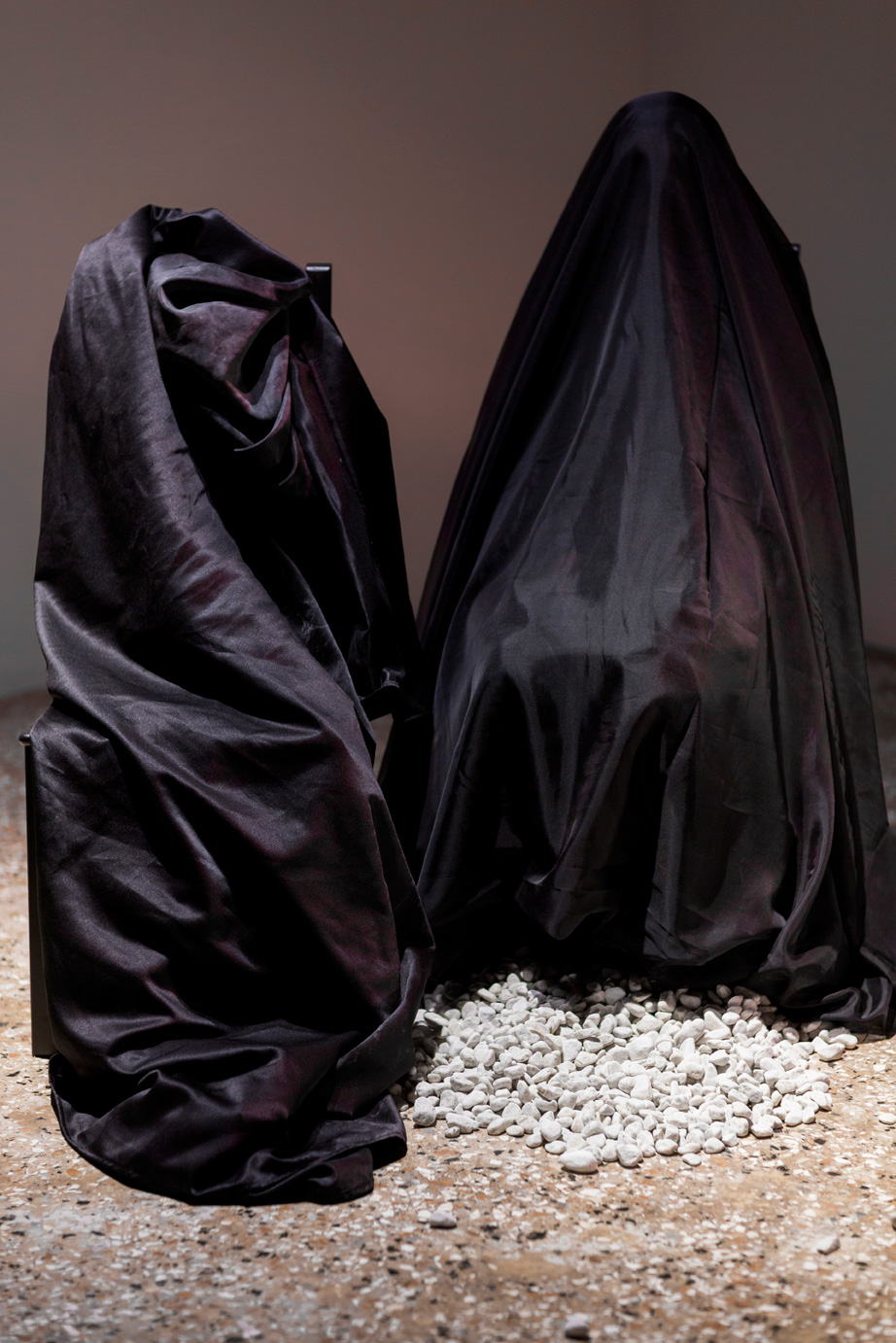
Marilyn Arsem, Marking Time. Venice International Performance Art Week (2014). Photograph by Monika Sobczak.
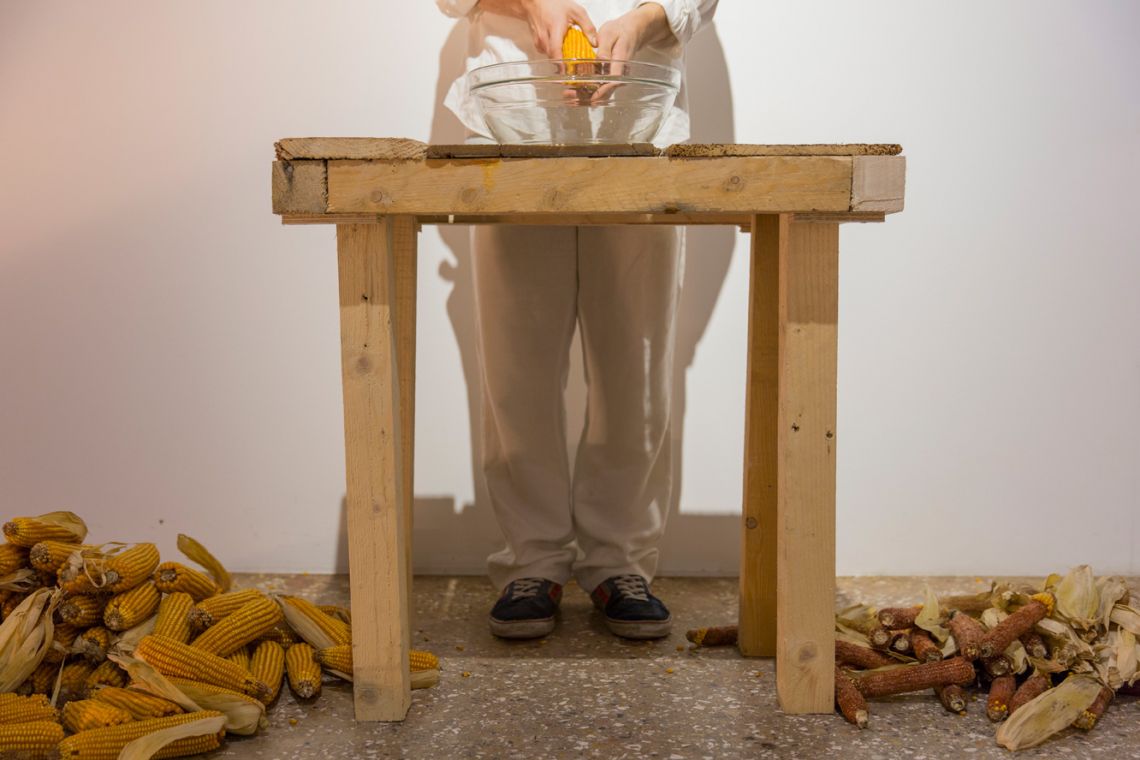
Melissa Garcia Aguirre, Disapareciendo/Disappearing. Venice International Performance Art Week (2014). Photograph by Monika Sobczak.
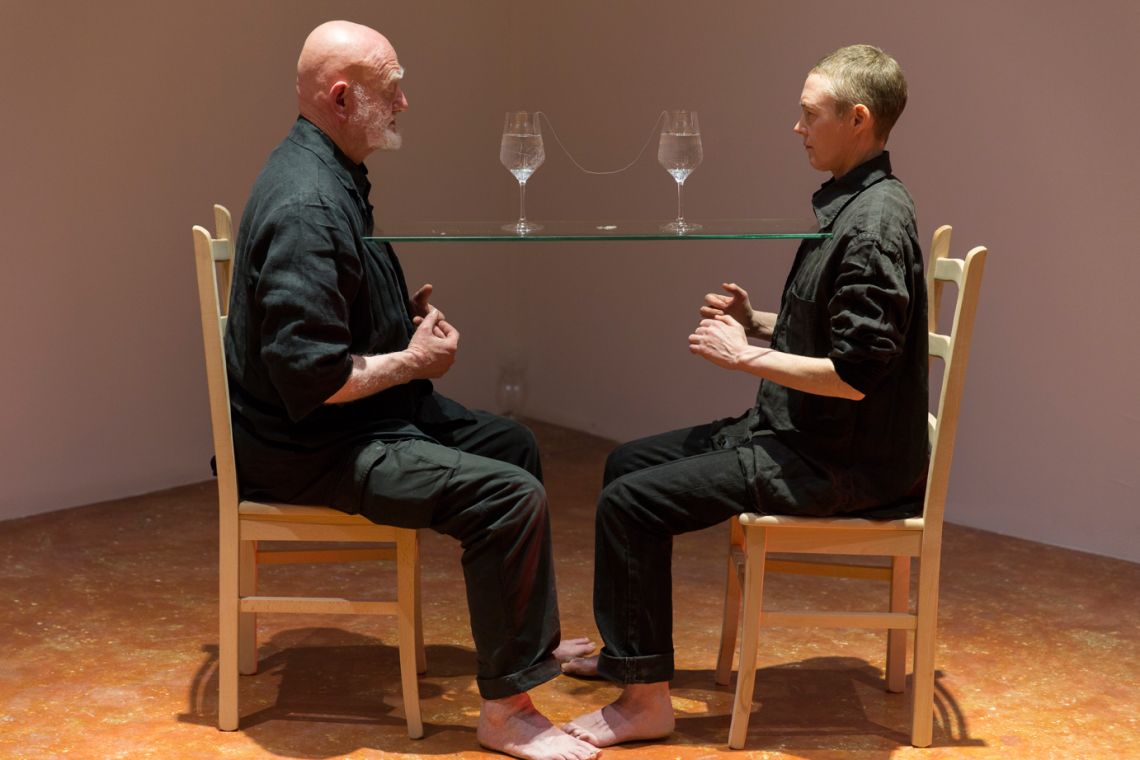
Sandra Johnston & Alastair MacLennan, Let Liminal Loose. Venice International Performance Art Week (2014). Photograph by Monika Sobczak.
.jpg)
Julie Vulcan, I Stand In. Venice International Performance Art Week (2014). Photograph by Monika Sobczak.

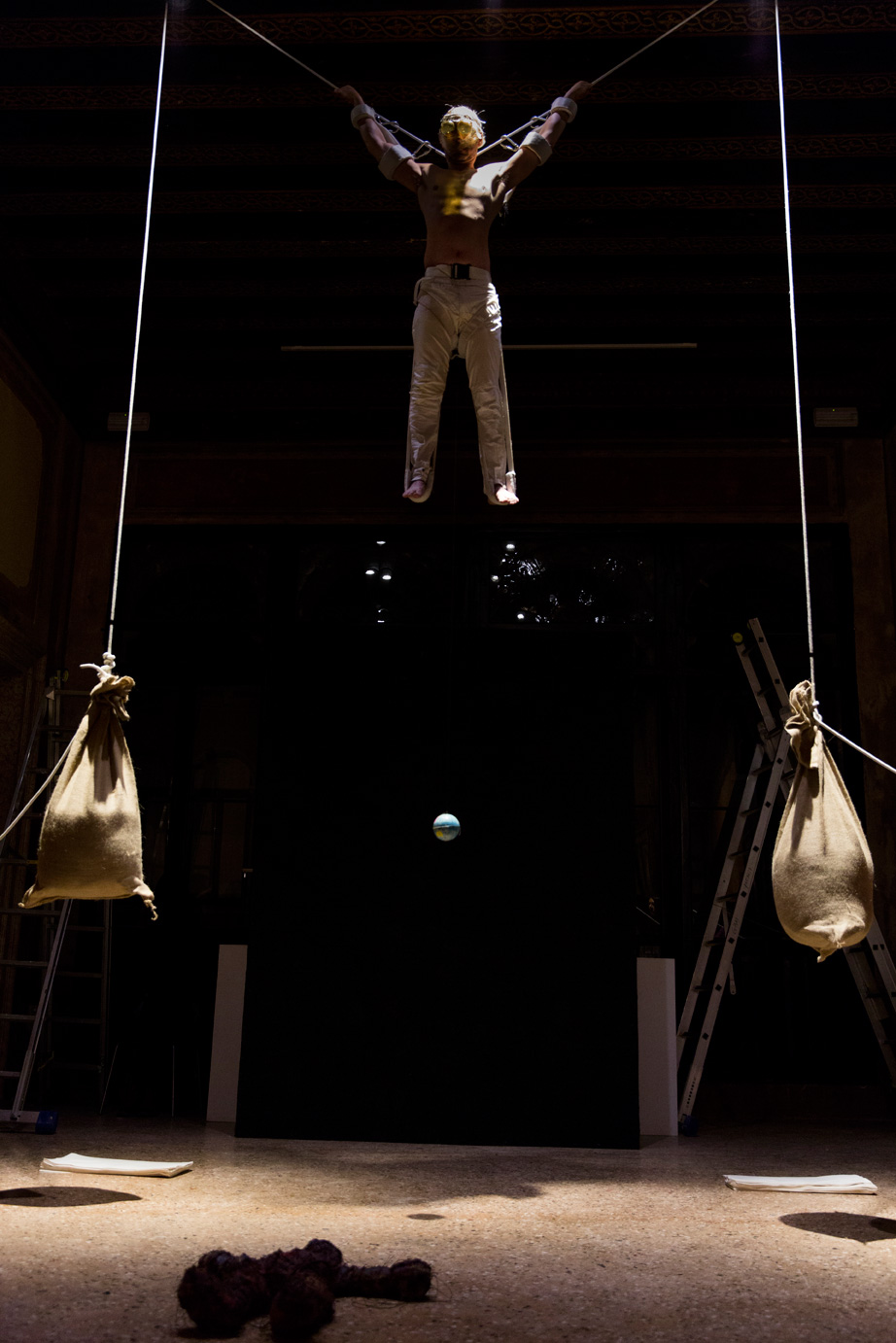
Martin Renteria, Erosion - Entropic Action. Venice International Performance Art Week (2014). Photograph by Monika Sobczak.

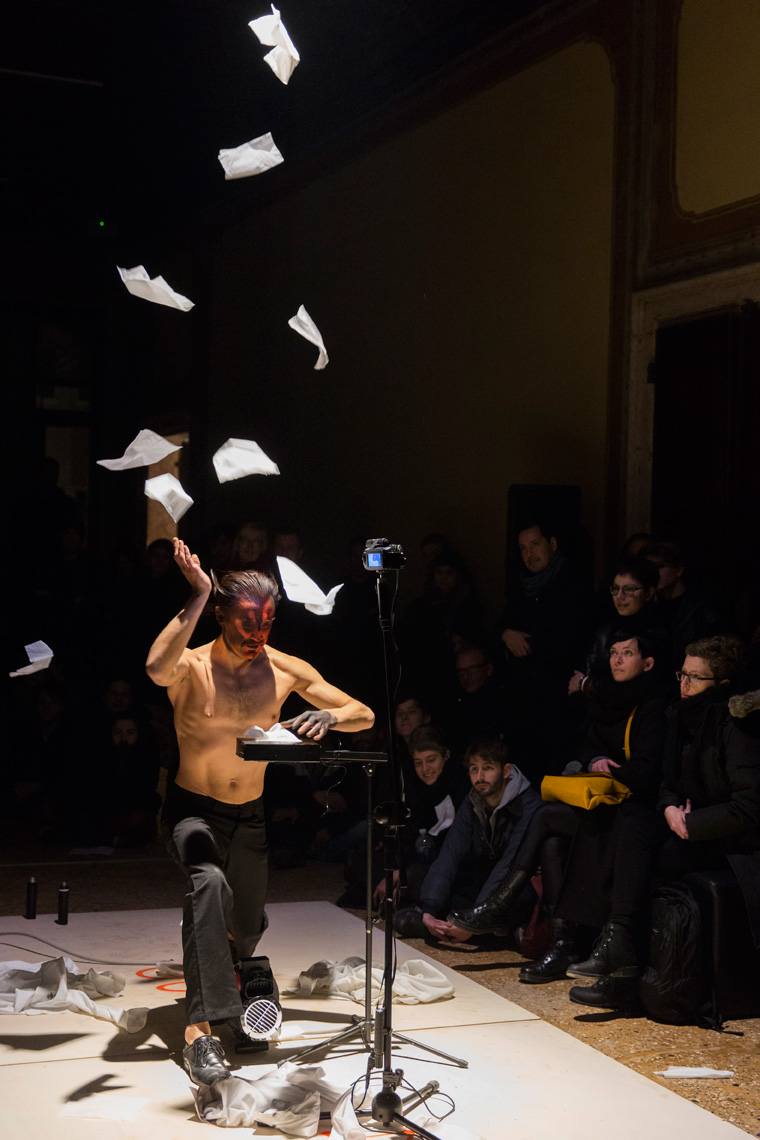
Arti Grabowski, Wrong way, right direction. Venice International Performance Art Week (2014). Photograph by Monika Sobczak.
